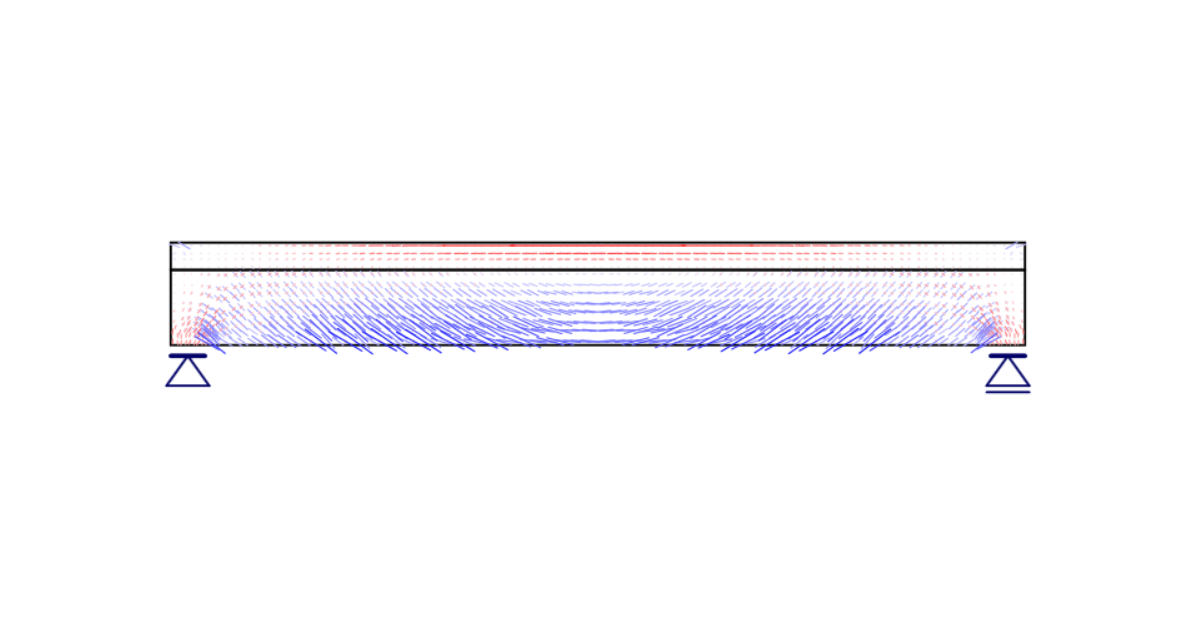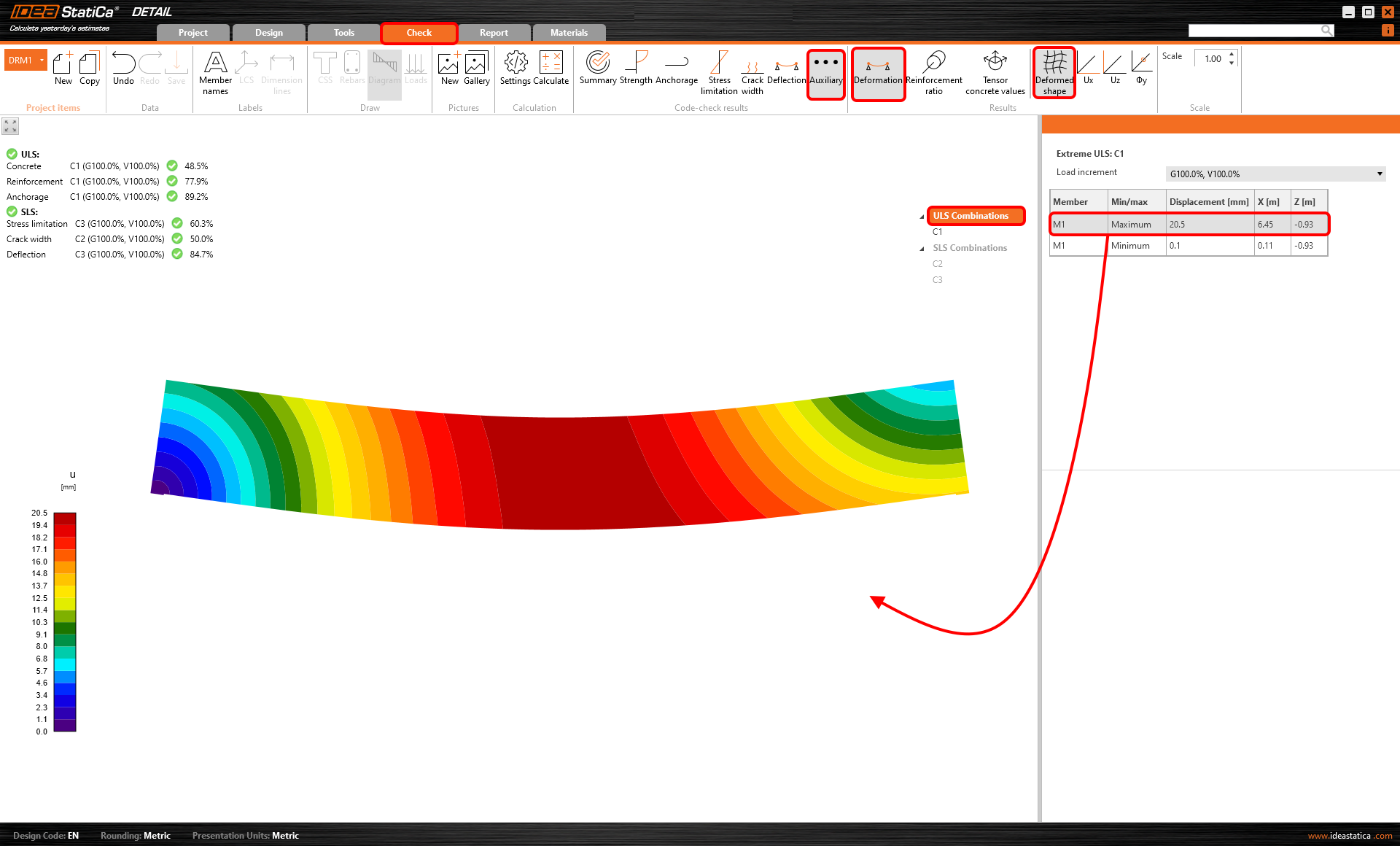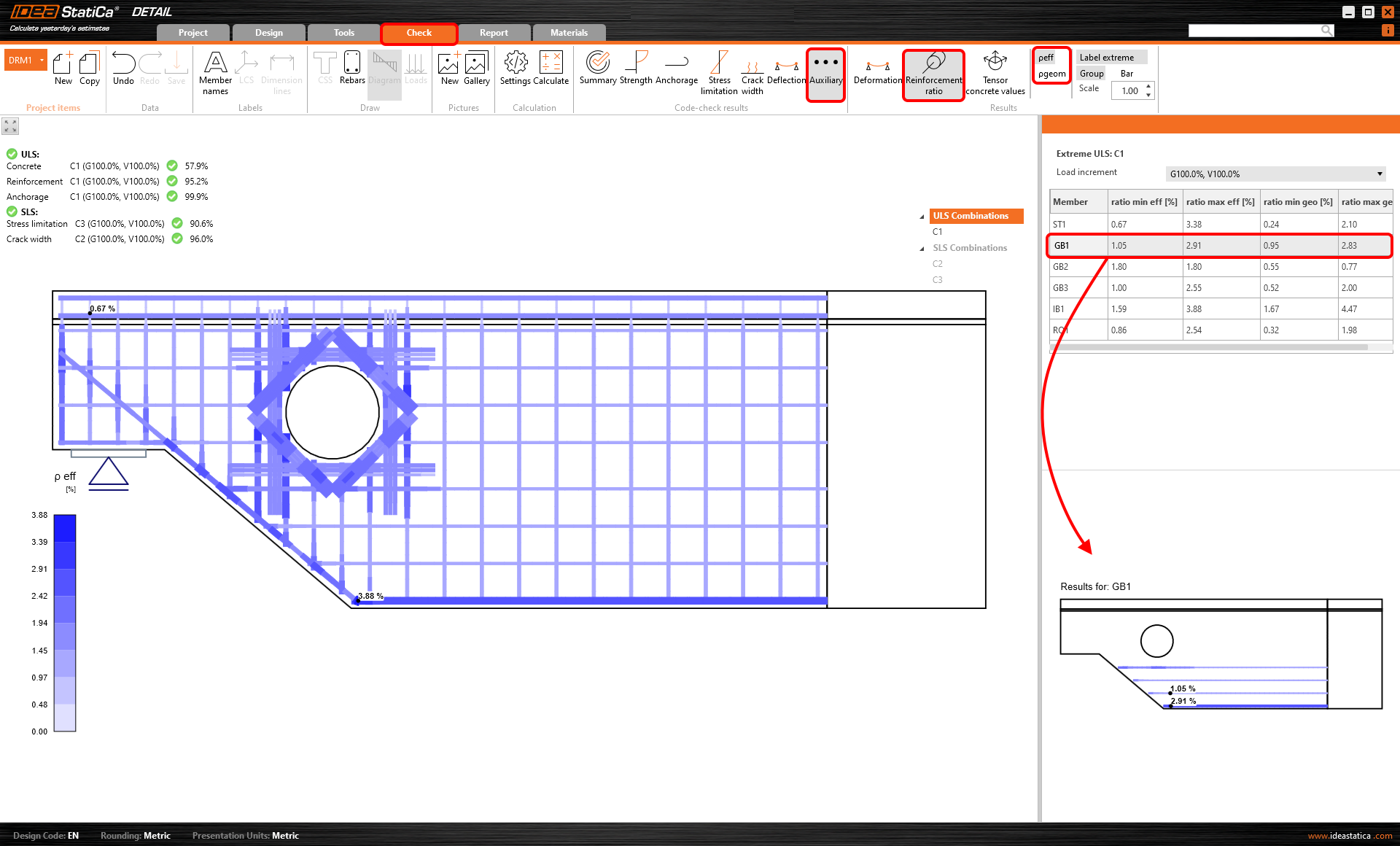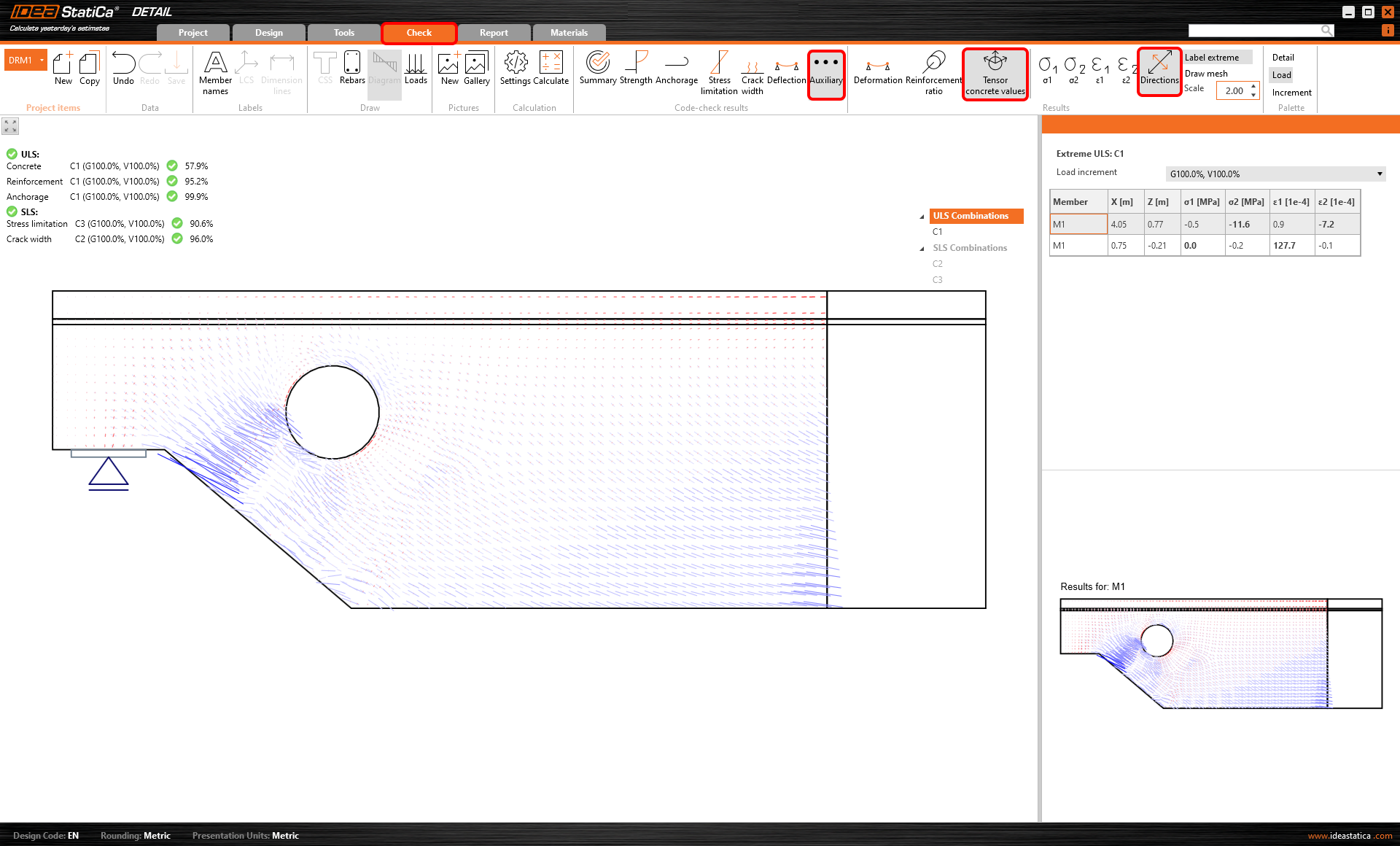Knowledge base
General description of Auxiliary results in Detail application
This article dedicates to the presentation of the results in the Detail application, focusing on the Auxilary.
Let's go through all three options of the results.
Deformation
The deformation in the auxiliary is non-linearly calculated (plastic strains allowed) for ULS combinations and for individual load cases, as opposed to the deflection results, which are calculated linearly for the characteristic combinations. The creep coefficient is not considered in the auxiliary deformation results.
We can display Ux or Uz deformation.
Reinforcement ratio
There are options to choose an effective reinforcement ratio or a geometric reinforcement area.
- ρeff - effective reinforcement ratio - The ratio between the reinforcement bar area and effective concrete area acting in tension
- ρgeom - geometric reinforcement area - The ratio between the reinforcement bar area and nearby proportional concrete area in a given zone.
Tensor concrete values
There are again several options for how to display tensor concrete values:
- Principal stresses in concrete σ1 and σ2. Note that the principal stress σ2 is the same stress presented in the Strength results.
- Principal strains in concrete ε1 and ε2. Note that the principal strain ε2 is the same strain presented in the Strength results.
- Moreover, the possibility to display directions of principal strains has been implemented. The advantage of this feature is that the directions include compression and tension.
These values are non-linearly calculated for ULS combinations and for individual load cases.





